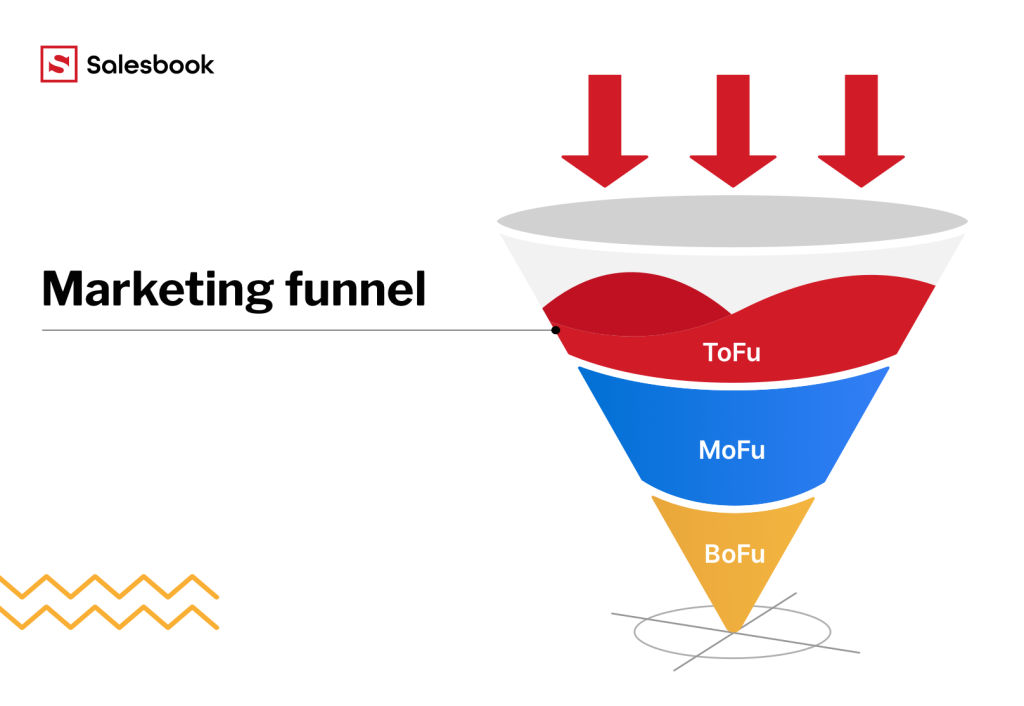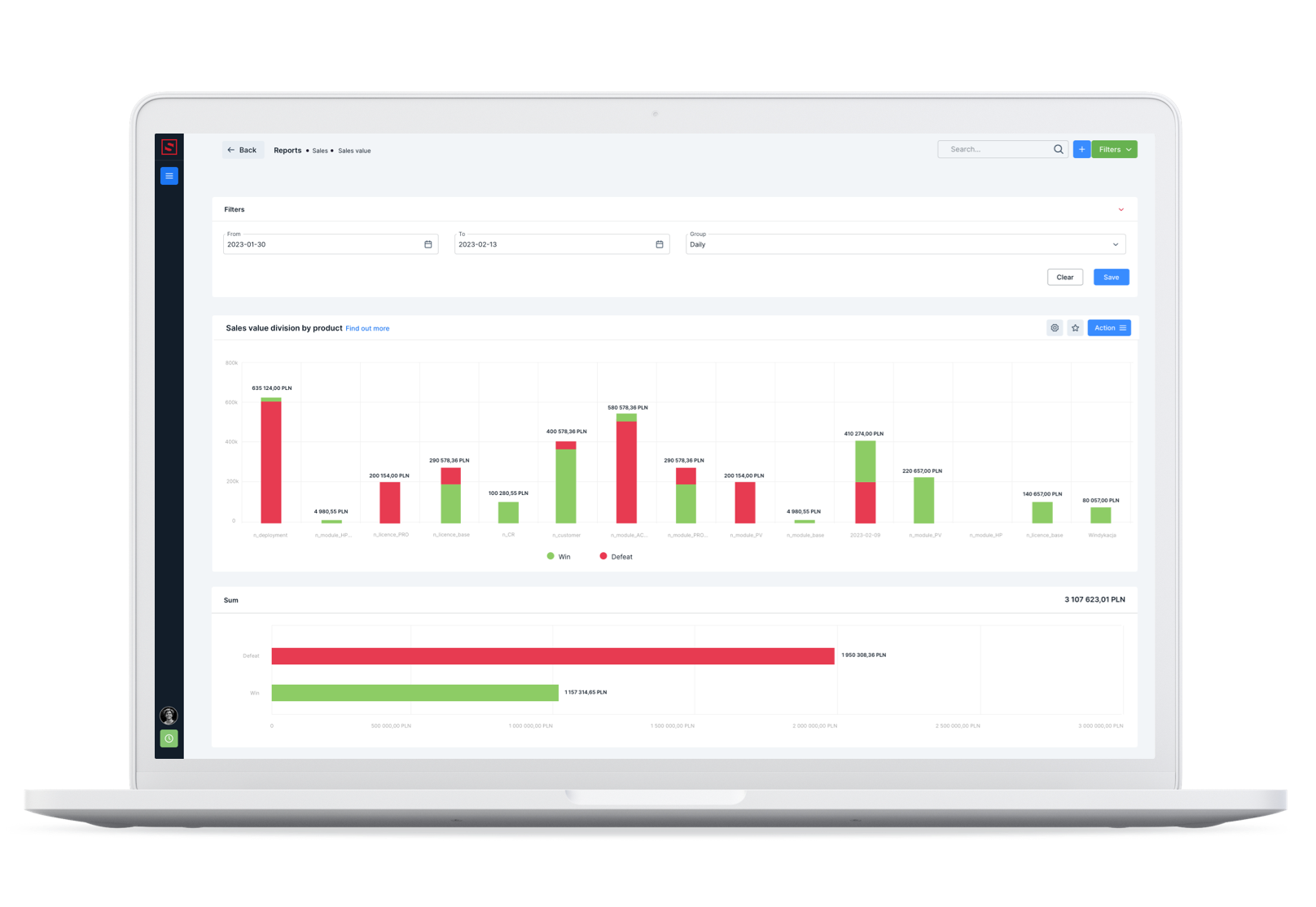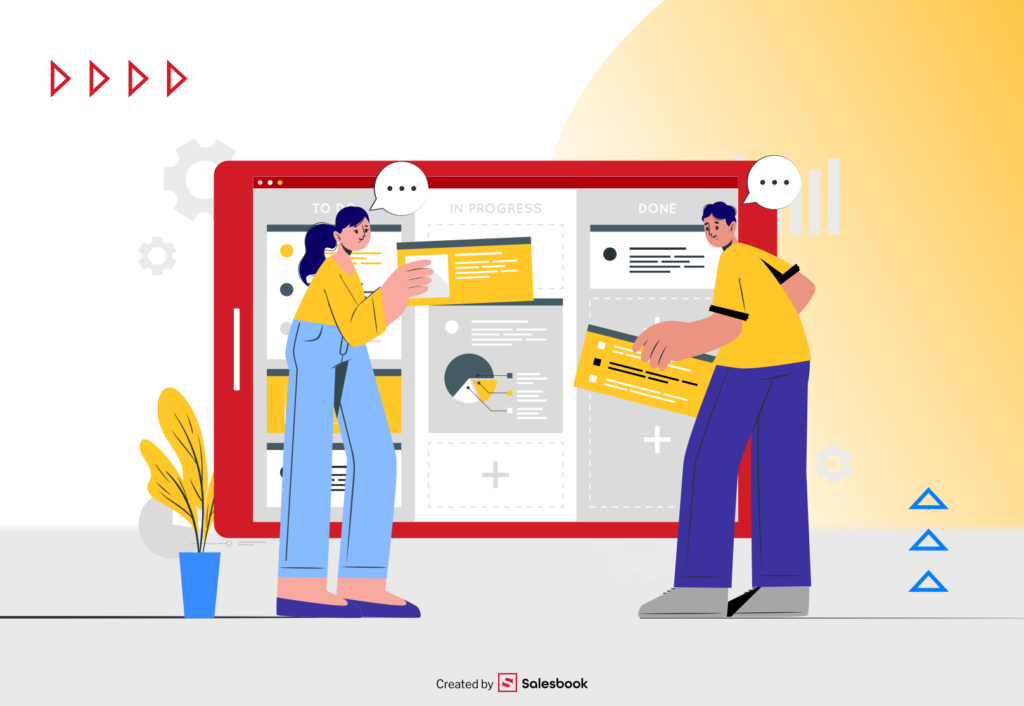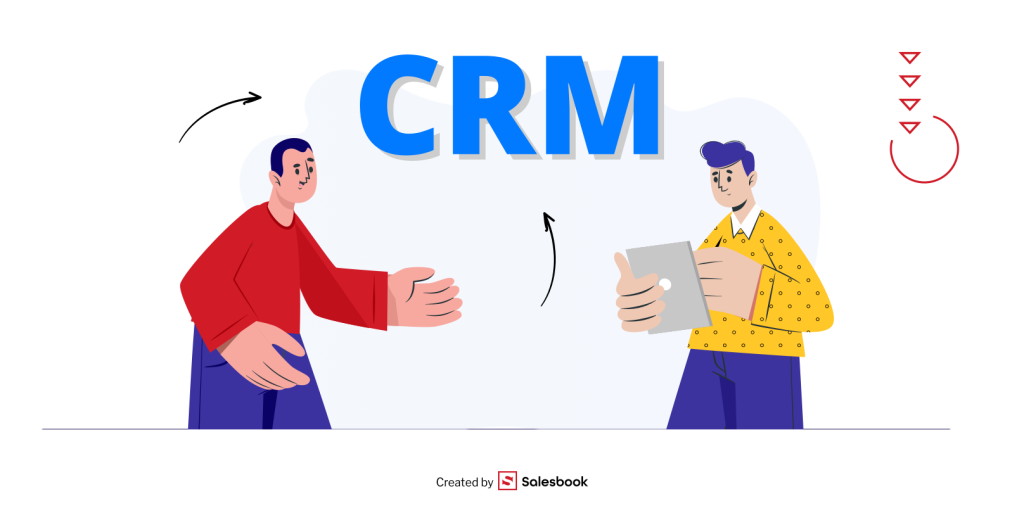What is a sales funnel, and how to create it?

The term sales funnel has been widely used, however, many people still do not know how it works. Read our article and learn how to build an effective sales funnel.
What is a sales funnel?
The terms sales and marketing funnel have been used interchangeably. However, there are some differences between these two concepts that require an explanation.
The marketing funnel is a path that your customers take from the first contact with your brand to the first contact with your company or purchase. Before your potential customers (new leads) decide to buy a product and become paying customers, they go through various sales stages.
On the other hand, we have the sales funnel that mirrors a sales process and all activities done by sales reps to convince prospective customers and close deals.

In other words, the marketing funnel relies on activities that aim at gaining a potential customer, and the sales funnel is based on planning further steps by sales reps.
By optimizing your sales funnel and marketing funnel, you can improve your sales and marketing efforts.
What is the customer journey in the marketing funnel? What are sales funnel stages? Why is a shape of a funnel so important? You will find the answers in the rest part of this article.
The shape of a marketing and sales funnel
Marketing and sales funnels are similar in their shape. They are broad at the top and narrow at the bottom. However, their center parts are different.
The top of the funnel reflects a beginning of an entire sales process when you want to attract a large number of potential customers (your target audience). As, you can see, the bottom of the funnel is very narrow as a small number of customers who are really interested in your products or services.
The buying process and its progress depend on you and your engagement. Taking care of the quality of initial contact with new customers, customer interactions, and way of communication – these factors matter.

The sales funnel can be placed in the narrowest part of the marketing funnel. It is the stage when new customers have already been interested in your products or services. You will read more about building a marketing and sales pipeline in the rest part of this article.
General models of marketing funnels
There are various models of marketing funnels reflecting the marketing activities of teams. One of the basic examples is the AIDA model which describes four stages a potential customer goes through in a buying process before making an educated purchase decision.
The AIDA model was created by E. St. Elmo Lewis, an American advertising and sales pioneer. He believed that a good advertisement should attract a reader’s attention and encourage them to read its text. The next step is to interest the reader to read it longer. Finally, a good advertisement should be so convincing that the reader would believe in its content. This opinion is reflected in the AIDA model.

The stages of the AIDA model
Stage I: Attention
At the beginning of this stage, prospective customers hear about your products or services for the first time. It is a result of successful marketing efforts, paid campaigns, presence on social media, and a customer referral program.
Stage II: Interest
Here you can find customers who are interested in your products or services. They will consider if your offer satisfies their needs and if salespeople are able to help in solving their problems. Customers are certain to check an offer from your competitors.
Stage III: Desire
This is the moment when your potential customers should receive complete information about your company and its offer. Salespeople must take care of customer interactions and customer experience. They should choose the right way of communication to be convincing experts. If they make a good impression, they build customer loyalty and close deals in the future.

Stage IV: Action
It is time to close a deal. If a sales rep chooses a suitable way of communication and convincing arguments, a customer will decide to accept this offer. If the client will choose a different company, a sales rep should analyze their steps and draw conclusions for the future.
The ToFu – MoFu – BoFu model
This is another model of a marketing funnel. It consists of the following stages:
- ToFu – (the top of the funnel or the awareness stage) – potential customers’ awareness of your brand is at the beginning level. You can generate leads through paid advertisements, social media, or different marketing activities.
- MoFu – (the middle of the funnel or the consideration stage) – at this stage customers seek the best solutions, however, they are not certain what to choose. They consider your offer, but are willing to know more about your competitors’ products. Therefore, you must stand out from the crowd and invest in such activities as writing blogs, and e-books, or organizing webinars.
- BoFu – (bottom of the funnel or the decision stage) – this is the moment when a transaction comes to an end, you should know which sales and marketing actions were successful and what the conversion rate was. Remember that before your clients make decisions, they want to be sure that they are right.

The funnel does not end with the end of a transaction. Nowadays, salespeople focus on various after-sales activities.
Does a universal sales funnel exist?
Since you know two models of marketing funnels, you may consider the differences between a sales funnel and a marketing pipeline. Does a universal sales funnel exist?
There is no universal sales funnel that is appropriate for every company. However, every owner of a company should think about creating their own sales funnel.
Sales funnels should be built in relation to the specific character of a given branch. Why is that so relevant? Different factors can matter depending on a company. For example, the moment at which a customer is in contact with your brand for the first time and what their next steps are. Furthermore, a sales funnel does not have to be associated with a broad sales process. If you do not have many existing customers, you must update your sales funnel to the changing circumstances.
The precise model of a sales funnel
As we have mentioned – there is no universal model of a sales funnel. Companies use different models to analyze a sales cycle. However, sales processes have still evolved, and the basic sales funnel can be too narrow to show the complexity of processes. Therefore, you should look at the precise model of the sales funnel that takes more aspects into account. The sales funnel consists of several important stages.
The sales funnel stages
- lead – a sales funnel begins with a lead generated as a result of many marketing efforts that we have already described in this article. The lead (your new customer) can be interested in your company but does not have to know all details about products or services. They can conduct competitive research to gain more information.
- contact – it is time to reach your qualified prospects. You should contact customers and gather as much information as it is possible. Customer data refers not only to demographical data but also to behavioral and personal data. Remember to ask about needs, problems, and motivation. What do you know about your clients’ budgets? How much time do your customers need to make a decision? Are they willing to make it?
- lead qualification – every successful sales funnel must include this stage. At this stage of the sales funnel, you qualify leads and choose which customers are really interested in your products or services. Moreover, you decide which variants of your offer are better. Your task is easier if you use modern CRM tools.
- presentation – at this stage of the sales funnel you must stand out and present your company as the best available option. You should convince your customers and use arguments about your company’s position, modern offer, new technologies, etc.
- offer – it should be tailored to your client’s needs and help solve their problems. A personalized offer can help you achieve better sales performance. If you want to be persuasive, you should use modern marketing folders or technological tools.
- negotiations – you have to explain why your offer is better than others and justify the price.
- contract – this stage of the sales pipeline is very important, you can use a modern CRM tool to automatically generate contracts and sign them quickly.

Why is implementing a sales funnel important and why do you need it in your sales process?
We can say that sales teams in different companies move through various stages of sales pipelines. Some of these teams are present at every stage. However, others miss some stages and they even do not know about it.
If you are not certain what a strategy for customer retention is, or what your qualified leads are, you can move through a sales pipeline in the dark.
If you create a sales funnel that is optimized, it will help you understand which sales activities affect your customers in the best way. As a sales manager, or an owner of a company you will perceive the details of sales processes and be able to improve them.
A sales funnel helps you understand more processes than you think.
The advantages of a sales funnel
A well-built sales funnel leads to an increase in sales but has more advantages.
- If you create a sales funnel, you know who your customers are. As a consequence, you can define the best communication and strategy suitable for your target audience.
- You re-organize a sales cycle in your company and unify the process and sales management.
- You analyze processes in the company from different angles and can see the necessity of customer relationship management software.
- You analyze the results of marketing efforts and see which of them are effective. As a consequence, you can predict future purchases of your customers.
- You have information about every stage of the sales funnel. For example – thanks to a CRM system – about every customer interaction. You can eliminate ineffective processes and know why and where your prospects drop out.

- A well-created sales funnel is integrated with your CRM software, generates leads, and is helpful in choosing adequate sales methods.
The questions that should be asked (not only by your sales teams)
Now you know about the advantages of sales pipelines and how you can use them. It is time to create your own funnel. Before that, you should know the answers to the following questions:
- Who is your target audience?
- Do know about the key transactions concerning your most important customers? How work the most successful salespeople?
- To what extent is your offer attractive?
- How do you build interest and maintain relations with clients?
- In what way do you take care of customer service and after-sales activities?
How can you build your sales funnel with Salesbook?
Salesbook is an app and CRM system that supports sales teams at every stage of the sales process. This means that Salesbook will help you create your own sales pipeline, tailored to your company’s needs. It analyzes data thoroughly (sales leads) and monitors processes in your organization. What can you gain by creating a sales funnel with Salesbook?

You will know your customers
If a salesperson uses Salesbook during a meeting, the system receives data automatically. It means that you have complete information about your customers. For example, you can check what the main sources of your leads are, and invest money in the most profitable ones. You can monitor the most effective marketing campaigns, and from regions come your clients.
Furthermore, if your CRM tool receives leads, you can automatically sort them and ascribe them to salespeople. Thanks to this, you are certain that every client has a customer service specialist, and you do not waste chances.

You build brand awareness
Firstly, Salesbook allows you to stand out even at the beginning of the presentation of your company. During a meeting, a salesperson is equipped with a tablet with Salesbook that contains visual presentations, graphic images, videos, or other helpful materials that can interest clients.
Secondly, by using Salesbook, a salesperson can maintain a customer’s interest because of a personalized offer or even its several variants.
You know which products sell
On account of the fact that the next stages of the funnel rely on arousing your client’s attention, you must know what in your offer attracts them.
Salesbook gives you the opportunity to know the details of a sales analysis. Thanks to this, you are aware of which products or services are the most popular. Moreover, you know the sales value in a given period – it matters if you want to sell chosen items in different year seasons. It is also helpful if you want to withdraw some products.

You are focused on successful elements of sales in your company
It is easier to create a funnel if you know which elements of communication are the most effective. Thanks to Salesbook, you have access to all reports about meetings in your company and their results.
What can you gain because of that? You can analyze every step of a given salesperson and know who the most successful is. How long does it take to move to another stage of contact? What was the step that affected the purchasing decision? What else can you know? If the sales value in your company is lowered, you can react in advance.

You know the details of closed deals
Closing deals is the last stage of the funnel. If you have complete analytical data from Salesbook, you always know how many sales opportunities reach the final stage. Moreover, you are aware of what the most decisive factor is.
Salesbook provides you with a complete administration panel, therefore, you see the exact numbers of e-mails, follow-up messages, notes, and phone calls.
Discover Salesbook and its opportunities
You do not have to create a sales pipeline on your own. Salesbook, the app, the analytical tool, and the CRM platform, all in one, will help you do it.
If you want to create a well-built sales pipeline with Salesbook, try our free demo.
Table of Contents







